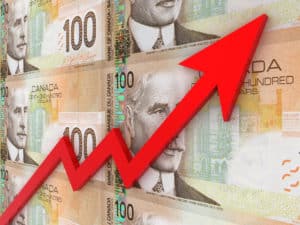The Registered Retirement Savings Plan (RRSP) in Canada has enticing benefits to plan holders. First, it’s a versatile savings vehicle primarily to save for retirement. Second, and equally meaningful is that RRSP contributions are tax-deductible.
When you contribute, you can deduct the contribution from your taxable income upon filing a tax return. Thus, an RRSP user can potentially pay less tax and save more money. For the 2021 taxation year, the maximum RRSP contribution limit would be $27,830. However, not everyone gets to take advantage of the full increase.
RRSP contribution limit calculation
The RRSP contribution limit changes yearly, and generally, the amount is 18% of your earned income in the previous year. Your contribution is the amount you add to your RRSP. However, it has a distinction from the RRSP deduction limit. The latter takes into account past unused RRSP contributions.
Thus, the RRSP deduction limit is always 18% of pre-tax earnings. Since most RRSP users don’t make the maximum RRSP contribution yearly, the contribution and deduction limits are not the same. The amounts will only be equal if you max out your contributions each year.
Sample computation
Remember that your contribution limit is the total of this year’s deduction limit and any unused (carried over) contribution room. If you’re a full-time employee and had $50,000 pre-tax earnings in 2020, here is how to compute the RRSP deduction limit: $50,000 x 18% = $9,000, the amount is less than the maximum limit of $27,830, so your RRSP deduction limit is $9,000.
It can get confusing at times to distinguish between the contribution and deduction limits. Fortunately, the CRA keeps track of a user’s contribution limit. When you receive a Notice of Assessment, check the “Available Contribution Limit” to make sure you don’t over-contribute.
Core holding
An RRSP is a tax-advantaged account that enables Canadians to invest in the account and derive tax breaks. The taxes on RRSP contributions are deferred until retirement. You can hold income-producing financial instruments in your RRSP.
Since most users are investing for the long-term, dividend stocks are ideal in an RRSP retirement portfolio. A recommended core holding is the Bank of Montreal (TSX:BMO)(NYSE:BMO). Aside from being Canada’s oldest bank, BMO is the first company ever to pay dividends. The dividend track record is 191 years and counting.
As of December 4, 2020, the share price is $ 98.05, while the payout ratio is 56.16%. After wallowing in the red for most of the pandemic, BMO is back in positive territory. The year-to-date gain is now 3%, or an incredible rally of 83% from its COVID-low.
BMO is among the preferred buy-and-hold stocks in the TSX. The Dividend Aristocrat can deliver a stable and recurring income stream until you close your RRSP at age 71. With its 4.32% dividend, a $50,000 investment today will compound to $116,498.63 in 20 years.
RRSP contribution age limit
Money could be the reason why some Canadians are putting off opening an RRSP. If your finances improve anytime soon, it’s not too late to open an account. The RRSP contribution age limit is 71, so you have until December 31 of the calendar year you turn 71 to contribute.








